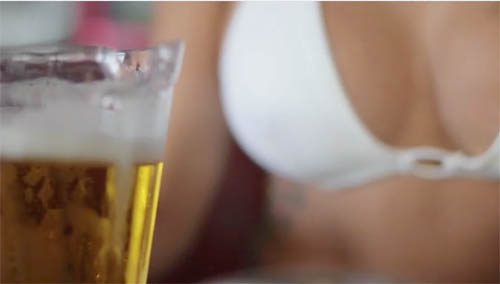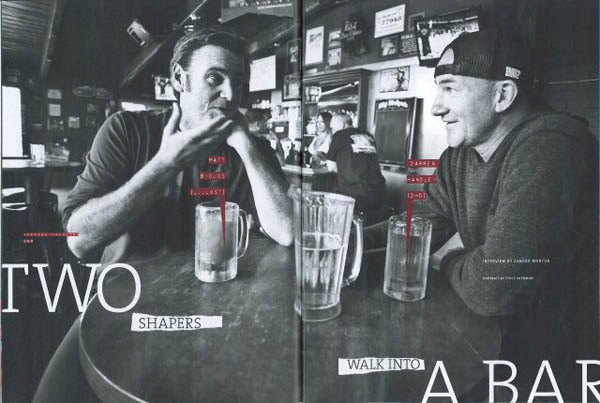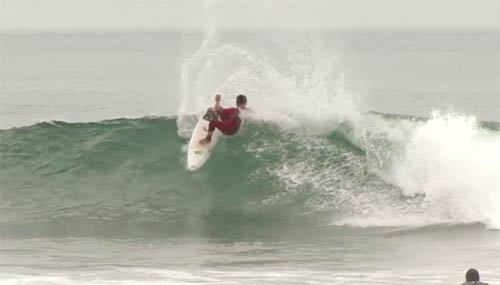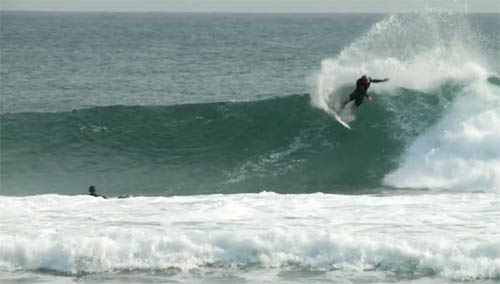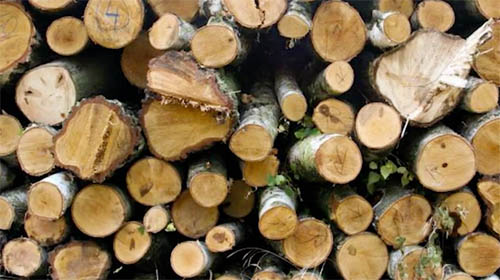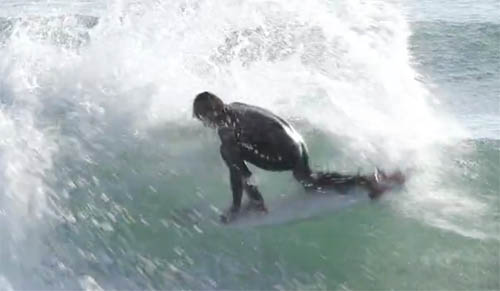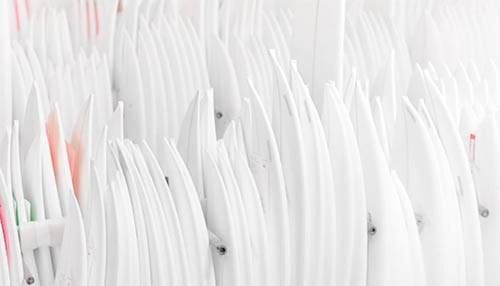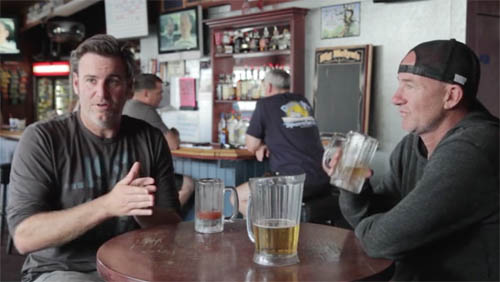Blog posts
必見!このブログをご覧になっている方への優先情報です!
必見!このブログをご覧になっている方への優先情報です! ラヴサーフへお電話やメールにて多数のお客様からお問い合わせをいただいている、 このモデルのこのサイズのこのテクノロジーのストックボードはいつ入荷しますか?? という、要望に応える為に! LOSTのベトナムEOPXYボード専門ファクトリーへ交渉し、期間限定で「プレオーダー」イベントをスタートしました。 『ダブルダート』『ブラックシープビルト』『ライトスピード2』これらのLOSTから発売されているストックボードを入荷時に惜しくも買い逃してしまった方、または乗りたいのだけれども、お目当てのモデル・テクノロジーのご自身のベストサイズが既に売り切れてしまっている方へ向けて「プレオーダー」イベントをひっそりとスタートしました。今まで入荷が無かった新サイズもあります!! 今後LINEのお知らせなどで「プレオーダー」イベントのことを大勢の方が知ることになると思いますが、数十本しか特別受注製作できないので、まずは熱心にラヴサーフのこのブログをご覧になっている方へお知らせいたします。 「プレオーダー」イベントのオーダー受付期間は、1/4日締切とさせていただいております。現在ご注文いただくと2026年4月ごろのお引き渡しで、ご希望のボードを特別受注製作にてピンポイントでストック制作させていただきます。 2026年には値上げも予定されていて、今回の「プレオーダー」イベントは2025年現行プライスでの特別受注受付にもなっていますのでプライス面でもお得だと言えます。 このブログを書いている間にも「プレオーダー」イベントがスタートしたことに気付いてくださった方から「プレオーダー」を数本いただいております!早速の「プレオーダー」ありがとうございます! 今までなかった新サイズもある!「プレオーダー」可能なモデルはこちらです! DOUBLE DART 「RNF’96」DOUBLE DARThttps://www.luvsurf.co.jp/products/rnf-96-fish-tail-double-dart 「RNF’96 KING FISH」DOUBLE DART(新規サイズ 5’11・6’1・6’3・6’5・6’7)https://www.luvsurf.co.jp/products/rnf-96-kingfish-double-dart 「BIG RIG DRIVER」DOUBLE DART(新サイズ 5’8・5’9・5’11・6’1・6’3・6’5)https://www.luvsurf.co.jp/products/big-rig-driver-double-dart 「SMOOTH OPERATOR」DOUBLE DARThttps://www.luvsurf.co.jp/products/smooth-operator-double-dart 「PARTY PLATTER」DOUBLE DART(新サイズ 5’1・5’3・5’5・5’7・5’9・5’11)https://www.luvsurf.co.jp/products/party-platter-double-dart 「THE RIPPER」DOUBLE DARThttps://www.luvsurf.co.jp/products/the-ripper-squashtail-double-dart 「SUB DRIVER 3.0」SWALLOW DOUBLE DART(新サイズ 5’4・5’5・5’6)https://www.luvsurf.co.jp/products/sub-driver-3-0-swallow-double-dart LIGHT SPEED2 『BIG RIG DRIVER』(新規サイズ 5’8・5'9)https://www.luvsurf.co.jp/products/big-rig-driver-light-speed-2 「THE RIPPER」ROUND LIGHT SPEED2(新サイズ 5’6・6’1・6’2)https://www.luvsurf.co.jp/products/the-ripper-round-tail-light-speed-2 「3.0 STUB DRIVER」THUMB LIGHT SPEED2(新サイズ 5’4・5’5・6’0・6’1・6’2)https://www.luvsurf.co.jp/products/3-0-stub-driver-thumb-tail-light-speed-2 「DRIVER 3.0」ROUND LIGHT SPEED2(新サイズ 5’4・5’5・6’0・6’1・6’2)https://www.luvsurf.co.jp/products/56-driver-3-0-round-tail-kopi 「SUB DRIVER 3.0」SWALLOW LIGHT SPEED2(新サイズ 6’0・6’1・6’2)https://www.luvsurf.co.jp/products/511-sub-driver-3-0-swallow-2 「RNF’96」LIGHT SPEED2https://www.luvsurf.co.jp/products/rnf-96-fish-tial-regular-light-speed-2 BLACK SHEEP BUILT 『BIG RIG DRIVER』ホワイトテクスチャー(新サイズ 5’8・5’9)https://www.luvsurf.co.jp/products/big-rig-driver-black-sheep-built-taipu-b 「RNF’96」BLACK SHEEPhttps://www.luvsurf.co.jp/products/rnf-96-black-sheep-built 「PARTY PLATTER」BLACK SHEEP テクスチャーホワイト(新サイズ 5’11)https://www.luvsurf.co.jp/products/party-platter-black-sheep-white 「SMOOTH OPERATOR」BLACK SHEEPhttps://www.luvsurf.co.jp/products/smooth-operator-black-sheep-built 「PISCES」BLACK SHEEP(新サイズ 5’3・6’0・6’1・6’2)https://www.luvsurf.co.jp/products/pisces-black-sheep-built 「RAD RIPPER」BLACK SHEEP テクスチャーホワイト(新サイズ 6’1)https://www.luvsurf.co.jp/products/rad-ripper-black-sheep-built-white 「SUP DRIVER」BLACK SHEEPhttps://www.luvsurf.co.jp/products/sup-driver-black-sheep-built 「MICKS TAPE」BLACK SHEEP テクスチャーブルー(新サイズ 5’2)https://www.luvsurf.co.jp/products/micks-tape-black-sheep-built-blue 「SUB DRIVER 3.0」SWALLOW BLACK SHEEP(新サイズ 5’4・5’5・6’0・6’1・6’2)https://www.luvsurf.co.jp/products/sub-driver-3-0-swallow-black-sheep-built
Learn moreクリスマスのギフトや年末年始のお出かけの際に重宝する『Db』バック!オススメです!
こんにちは、スタッフのソウスケです。 年末年始のお出かけのご予定やクリスマスに大切な方へ送るギフトは決まっていますか? ギフトや年末年始のお出かけに重宝する『Db』のオススメバックをご紹介致します! 最初にご紹介するのは機能性とデザイン性を両立した万能スリングバッグ『RAMVERK PRO SLING BAG 20L』。 ・普段使いの荷物〜日帰りのギアまでしっかり収納できる20Lサイズ。 ・ブラックアウトはシンプルでどんなスタイルにも合わせやすい色。 ・防水性のあるナイロン&ポリエステル製で、雨の日やアウトドアも安心。 ・約300gと軽量なので、長時間持ち歩いても疲れにくい。 ・ショルダーストラップは調整可能。街歩き/通勤/旅行/撮影など幅広く使えます。 日常でも旅先でも活躍させやすく、アクセントになる便利なバックです! 日常使い〜出張・旅行シーンまで幅広く活躍する 高機能ノートPC用スリーブケース『Ramverk Laptop Sleeve』。 ・14インチ対応: MacBook Pro / Air や一般的なノートPCにぴったり。 ・ウェアラブル仕様: 収納可能なショルダーストラップ付きで、斜め掛けとしても使えます。 ・隠しポケット付き: パスポートやAirTag 用のポケットなど、旅先で嬉しい収納機能あり。 ・超軽量&コンパクト: 約0.29kg と軽く、毎日持ち歩いても負担が少ない。 大学生から社会人まで幅広い層の方へ自信をもっておすすめできる、上質で実用性が高く日常的にノートパソコンを持ち歩く現代のライフスタイルに寄り添います。 最後にご紹介するのは年末年始の旅行の際に便利な『ESSENTIAL WEEKENDER 40L / BLACK OUT』。 ・約40Lの容量で1〜3泊程度の年末年始旅行や帰省の荷物がしっかり入るサイズ。 ・防水・耐久性のある素材を使っているため、雪・雨の多い冬の移動でも安心。 ・ハンドル+ショルダーストラップの2WAY仕様で荷物が増えても運びやすい。 ・大きく開くジッパー設計なので、衣類やお土産などの出し入れがスムーズ。 衣類や小物もしっかり収納でき、移動の多い年末年始でも快適にお使いいただけます。 シンプルで落ち着いたデザインはシーンを選ばず、旅行はもちろん、帰省やちょっとしたお出かけにもおすすめな『ESSENTIAL WEEKENDER 40L / BLACK OUT』。 この機会に、年末年始のお供としてぜひ取り入れてみてくださいね! 同じく『Db』から発売されているローラー付きサーフバック『THE DJARV 3-4 SURFBOARD COFFIN 3〜4本用』も大好評発売中です! サーフボードコフィンは、3〜4本のサーフボードをしっかり守れる大容量サイズで、年末年始のロングトリップにも安心して使える頼れるアイテムです。 丈夫な構造とクッション性のある素材で、移動中の衝撃や擦れからボードを守ります! サーフトリップに必要なタオルやウエットスーツ、ワックスまでこのケース一つに収容可能です! 防水性/耐久性があるので、雨や潮風の影響にも強く、天気が変わりやすい南国へのサーフトリップの際も安心して使えます! サイズ展開も2種類あるので様々なボードサイズ形状への対応可能です。 〜6’6″対応サイズ(ショートボードを中心に収納したい方に最適。軽量で扱いやすいサイズ感) と〜7’6″対応サイズ(ミッド〜ロングまで幅広い板種に対応。トリップ先で複数タイプのボードを持って行きたい方にも安心。) 年末年始の波乗り旅をもっと快適に、そして安全に楽しみたい方は、ぜひ 『THE DJARV 3-4 SURFBOARD COFFIN』 をトリップギアに加えてくださいね! 『THE DJARV 3-4 SURFBOARD COFFIN』をご覧の方はこちらからどうぞ! 『Db』商品一覧をご覧の方はこちらからどうぞ!
Learn more【年末年始】営業日時・通販配送についてのお知らせです。
いつもラヴサーフをご利用いただいだきありがとうございます。 【年末年始】の営業日時および通販配送についてのお知らせです。 実店舗は、12/29~1/4までお休みとなります。 年内の営業は12/28(日)まで、年始は1/5(月)より通常営業いたします。現在、年末に伴い FU WAX・ウェットシャンプーなどの消耗品のご注文が大変多くなっております。できる限り皆さまのご要望にお応えできるよう発送作業を進めておりますが、お急ぎの方はお早めのご注文をおすすめいたします。年末年始に乗れるストックボードもラヴサーフだから!!続々と入荷中!ニューボードで年末年始のお休みをサーフしまくりましょう!
Learn more初入荷! ブラックフェイドブラシが入った『RNF’96』6’0” 38clが1本だけ入荷しました!
こんにちは。スタッフのコウヘイです。 発売から数年の時が経ちましたが、変わらず売れ続けているモンスターモデル『RNF’96』のラヴサーフだけで購入できるLimited Colorの6’0”が初入荷しましたよ! ショートボーダーなら『RNF’96』の名前を聞いたことがない人はいないんじゃないかと思うぐらい有名なモンスターモデルですよね!? 私達一般サーファーにとって最高なモデルなのはもちろん、コンテストでは『DRIVER』シリーズに乗って戦っているLOSTチームのワールドクラスのコンペティターだけでなく、他ブランドにサポートされているワールドチャンピオンまでを虜にするからここまで世界中で『RNF’96』の名は知れ渡っているんです。 『RNF’96』は、あまりの調子の良さに、様々サイズや様々なマテリアルで、複数所有している方がいることからも、いかに『RNF’96』が優れているサーフボードなのかを物語っていますよね! もちろん”MAYHEM”も『SMOOTH OPERATOR』と同じ様に1軍としてよく使用し、数々のフォトショットを残しています。 普段乗っているパフォーマンスボードに比べ短く乗るのがベーシンクな『RNF’96』のサイズ選びですが、 オーバーフローで乗ってもとても調子良いから、思い切って大きめのサイジングで乗っている方も多いんですよ! 今回1本だけ入荷した6’0”サイズも実は人気サイズで、店頭に並んでもすぐにお客様の元に旅立ってしまうので中々ストックボードとして並ばない貴重なサイズです! 他ブランドがこぞってコピーする程、優れたサーフボードデザインで、パドルが楽でテイクオフが早いだけでなく、パフォーマンスボードライクな動きができる『RNF’96』。 ワールドチャンピオン『ガブリエル・メディーナ』は、オリンピックの大舞台で使用する為に『MAYHEM』に2本オーダーしていたんですよ! WSLシェイパーズランキングを2年連続No.1をメイクした『MAYHEM』ならではの、きめ細やかな計算されたデザインの『RNF’96』は、乗り手のサーフィンを確実に変えてくれますよ! 『RNF’96』のモデル説明は>>>コチラからどうぞ!
Learn more

